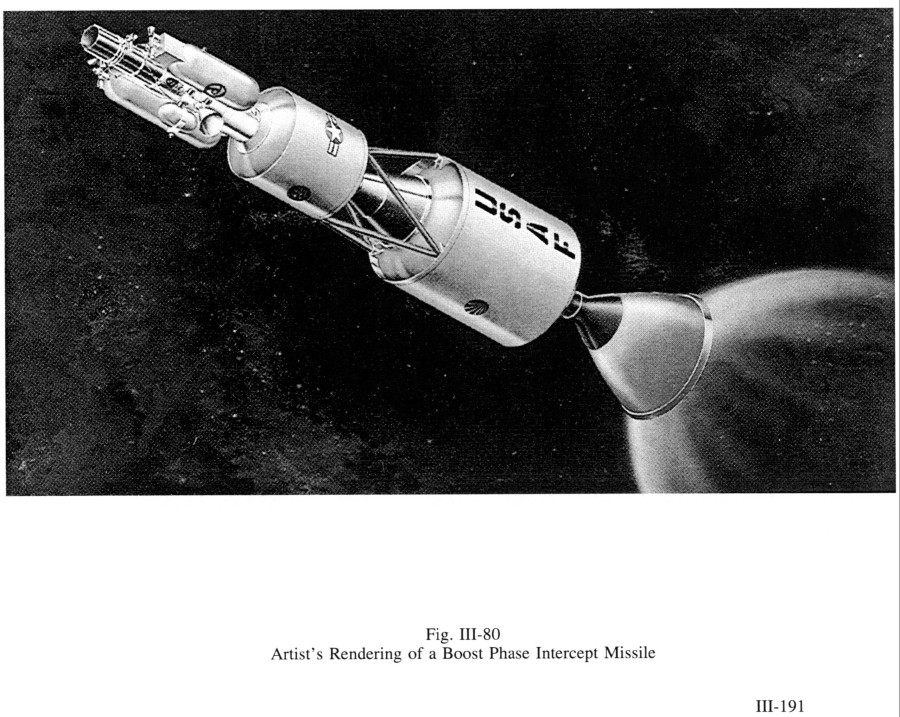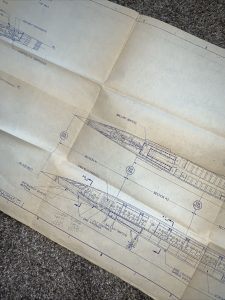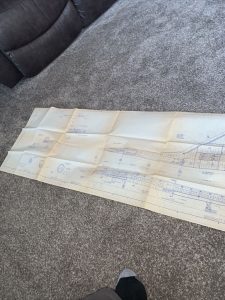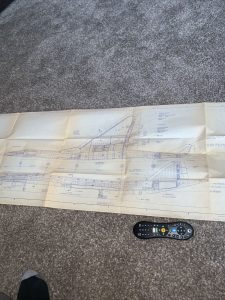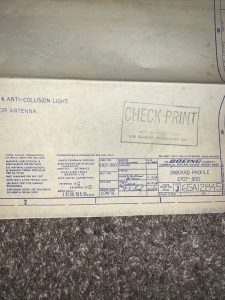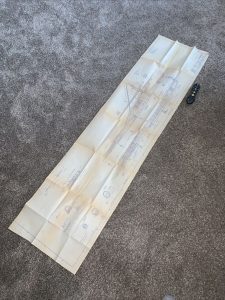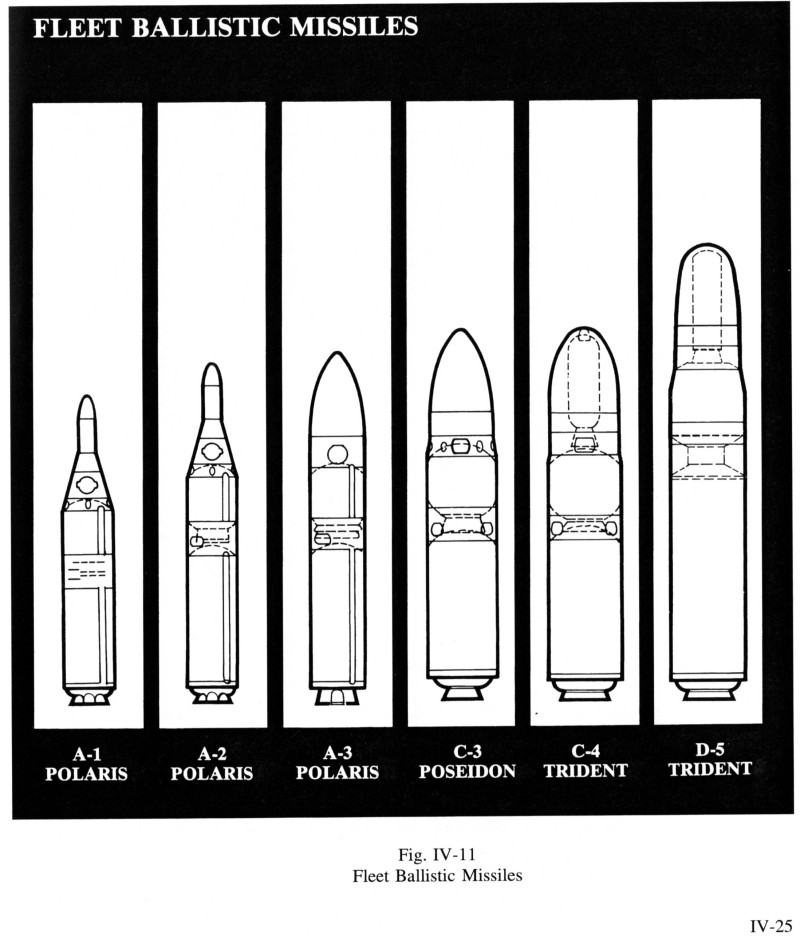An Aerojet concept for a boost-phase ICBM interceptor.
This would be a space-based anti-missile system composed of two high thrust solid rocket motors and a kill vehicle composed of a substantial set of optics, some impressive late 1980’s computers and most likely a hydrazine monoprop divert system. The missile would be meant to physically impact an ICBM while still being lofted by the first stage; this is an bigger, slower and brighter target than the later, faster, smaller stages and warheads, but you have to be *fast* to reach out and tag a missile in the first moments of flight.
